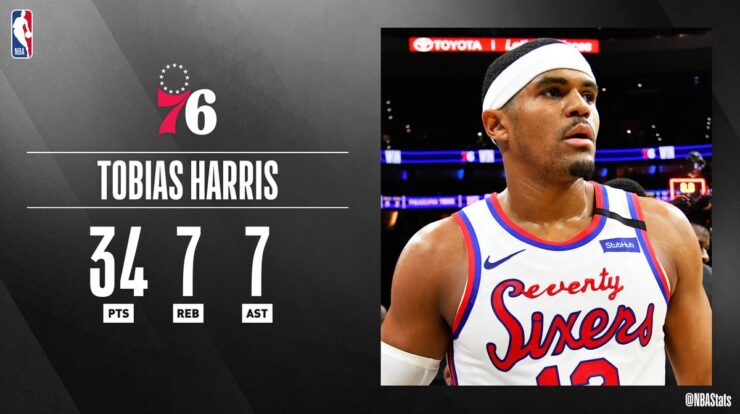
How to handle his snake yumi sin and fit kitty – Welcome to the ultimate guide on handling your snake Yumi Sin and fitting it with a kitty! In this comprehensive exploration, we’ll dive into the intricacies of snake handling, ensuring your scaly friend’s safety and well-being. Additionally, we’ll delve into the dynamics between cats and snakes, providing insights into their compatibility and offering practical advice on introducing them.
As we progress, we’ll uncover the importance of enrichment for snakes, exploring activities that stimulate their natural instincts and create a healthy environment. We’ll also shed light on common health issues affecting snakes, empowering you with knowledge to prevent and treat them effectively.
Finally, we’ll delve into the nutritional needs of snakes, providing a feeding schedule and guidelines to ensure your snake thrives.
Methods for Handling a Snake (Yumi Sin)
Step-by-Step Guide
To safely handle a snake, follow these steps:
- Approach the snake calmly and slowly. Avoid making sudden movements that could startle it.
- Position yourself behind the snake’s head and gently lift its tail off the ground.
- Support the snake’s body with your other hand, making sure to keep it close to your body.
- Hold the snake securely but gently, avoiding applying excessive pressure.
- When releasing the snake, place it on the ground in a safe location away from people and pets.
Tips for Avoiding Bites and Injuries
- Always wash your hands before and after handling a snake.
- Wear gloves if you’re concerned about being bitten.
- Avoid handling snakes that are sick, injured, or pregnant.
- Never handle a snake by its tail, as this can cause injury.
- Be aware of the snake’s body language and avoid handling it if it’s showing signs of aggression.
Compatibility of Cats and Snakes: How To Handle His Snake Yumi Sin And Fit Kitty

Whether cats and snakes can coexist harmoniously depends on several factors. Their individual personalities, prior experiences, and the environment play a significant role in determining their compatibility.
Although it’s important to properly handle my snake Yumi Sin and feed my cat Kitty, I need to also take some time to learn how to increase insurance agent productivity. I just read a great article on how to increase insurance agent productivity , and it had some great tips that I can use to improve my own performance.
Once I finish reading, I’ll get back to cuddling with Yumi Sin and Kitty.
Keeping cats and snakes together can have both potential risks and benefits. Cats have a natural instinct to hunt and may view snakes as prey, while snakes can inflict painful bites if they feel threatened. However, if properly introduced and supervised, they can sometimes learn to coexist peacefully.
Introducing Cats and Snakes
Introducing cats and snakes should be done gradually and under strict supervision. Start by placing the snake’s enclosure in a neutral area where the cat can observe it from a distance. Gradually reduce the distance over several days, allowing the cat to become accustomed to the snake’s presence.
During supervised interactions, keep the cat on a leash or harness to prevent any sudden attacks. Reward both animals for calm behavior and avoid any situations that could trigger aggression.
Enrichment for Snakes (Yumi Sin)

Enrichment is essential for the well-being of captive snakes. It provides mental and physical stimulation, helps prevent boredom, and encourages natural behaviors. Without proper enrichment, snakes can become stressed, lethargic, and prone to health problems.
Types of Enrichment
- Hiding places:Snakes need secure places to hide and feel safe. Provide a variety of hides, such as caves, tunnels, and foliage.
- Climbing structures:Snakes enjoy climbing and exploring. Offer branches, rocks, or artificial climbing structures.
- Basking spots:Snakes need a warm place to bask in order to regulate their body temperature. Provide a basking spot with a heat source, such as a heat lamp or heat mat.
- Water features:Many snakes enjoy soaking in water. Provide a shallow water dish or a small pool.
- Live prey:Feeding snakes live prey, such as mice or rats, provides mental and physical stimulation. However, live prey should only be offered under supervision.
- Toys:Some snakes enjoy playing with toys, such as balls or stuffed animals. Provide a variety of toys to keep your snake entertained.
By providing a stimulating and healthy environment, you can help your snake thrive in captivity.
Common Health Issues in Snakes (Yumi Sin)
Snakes, like any other animal, can experience a range of health issues. Recognizing the most common problems and their symptoms can help you provide proper care and seek veterinary attention when necessary.
It’s all about finding the right balance. You need to be able to handle his snake yumi sin and fit kitty, but you also need to be able to increase your insurance agent productivity. Here are some tips that can help you do both.
When it comes to handling his snake yumi sin and fit kitty, it’s all about being patient and understanding. You need to learn what they like and dislike, and you need to be able to respect their boundaries. Once you’ve done that, you’ll be able to build a strong relationship with them, and they’ll be more likely to listen to you.
Respiratory Infections
Respiratory infections are a prevalent health concern in snakes. They can be caused by bacteria, viruses, or fungi and are characterized by symptoms such as wheezing, coughing, discharge from the nose or mouth, and difficulty breathing. Treatment typically involves antibiotics or antifungal medications, along with supportive care like hydration and temperature regulation.
Skin Infections
Snakes can also develop skin infections caused by bacteria, fungi, or parasites. These infections may manifest as sores, scabs, or discoloration of the skin. Treatment options vary depending on the underlying cause and may include topical medications, antibiotics, or antiparasitic treatments.
Maintaining proper hygiene and avoiding overcrowding can help prevent skin infections.
Digestive Issues
Digestive problems are another common health issue in snakes. These can include regurgitation, vomiting, diarrhea, or constipation. Underlying causes can range from improper feeding practices to parasites or infections. Treatment involves addressing the underlying cause, providing supportive care, and adjusting the snake’s diet.
Metabolic Bone Disease
Metabolic bone disease, a condition resulting from inadequate calcium and vitamin D3 levels, can weaken a snake’s bones and make them susceptible to fractures. Symptoms include soft or deformed bones, muscle weakness, and difficulty moving. Treatment involves providing proper nutrition, including calcium and vitamin D3 supplements, and addressing any underlying health issues.
Preventing Health Problems
Preventing health problems in snakes involves providing a suitable environment, maintaining proper hygiene, and ensuring a healthy diet. Providing a clean enclosure with appropriate temperature and humidity levels, regular cleaning, and avoiding overcrowding can help reduce the risk of infections.
If you’re looking for tips on how to handle his snake yumi sin and fit kitty, check out this helpful guide: How to Handle His Snake Yumi Sin and Fit Kitty . This article provides detailed instructions on how to properly handle and care for these animals.
Offering a balanced diet tailored to the snake’s species and size, avoiding overfeeding, and providing access to clean water can promote overall health and prevent digestive issues. Regular veterinary checkups can also help detect and address health problems early on.
While I’m still learning how to handle my snake Yumi Sin and fit kitty, I’ve been thinking about how I can increase my productivity as an insurance agent. I found this article how to increase insurance agent productivity that has some great tips.
I’m excited to try them out and see how they can help me be more efficient in my work. Of course, I’ll still make sure to give Yumi Sin and kitty plenty of attention!
Nutrition for Snakes (Yumi Sin)

Snakes are carnivorous reptiles that require a diet consisting primarily of live or frozen prey. The nutritional requirements of snakes vary depending on their species, size, and age. However, all snakes require a diet that provides them with the essential nutrients they need to survive and thrive.
Feeding Schedule and Guidelines
The frequency of feeding for snakes depends on their size, age, and activity level. Young snakes typically need to eat more frequently than adult snakes. Active snakes may also need to eat more frequently than inactive snakes. A general rule of thumb is to feed snakes once every 7-10 days.
However, it is important to consult with a veterinarian to determine the optimal feeding schedule for your specific snake.When feeding your snake, it is important to offer prey that is the appropriate size. The prey should be no larger than the widest part of the snake’s body.
It is also important to make sure that the prey is fresh and free of disease.
Types of Food, How to handle his snake yumi sin and fit kitty
There are a variety of different types of food that can be offered to snakes. The most common type of food for snakes is live rodents. However, some snakes will also eat frozen rodents, chicks, or fish. It is important to offer your snake a variety of different types of food to ensure that they are getting all of the nutrients they need.
Final Wrap-Up

Navigating the world of snake handling and feline companionship can be an enriching experience. By understanding the techniques for handling snakes safely, fostering compatibility between cats and snakes, providing enrichment activities, addressing health concerns, and meeting their nutritional needs, you can create a harmonious and fulfilling environment for both your snake Yumi Sin and your feline friend.
General Inquiries
How often should I handle my snake?
The frequency of handling depends on the snake’s species and temperament. Generally, once or twice a week is sufficient for most snakes.
Can I let my cat and snake interact?
It’s not advisable to leave cats and snakes unsupervised together. Supervise interactions closely and be prepared to separate them if necessary.
What are some enrichment activities for snakes?
Hiding places, climbing structures, and live prey are excellent enrichment activities that stimulate snakes’ natural behaviors.
What are the most common health issues in snakes?
Respiratory infections, skin infections, and parasites are among the most common health issues in snakes.
What should I feed my snake?
The diet of snakes varies depending on the species. Generally, they eat rodents, fish, or insects.





